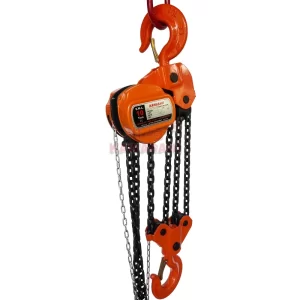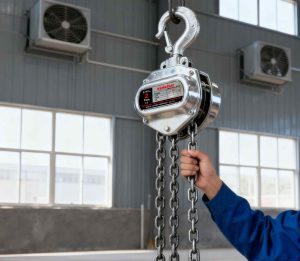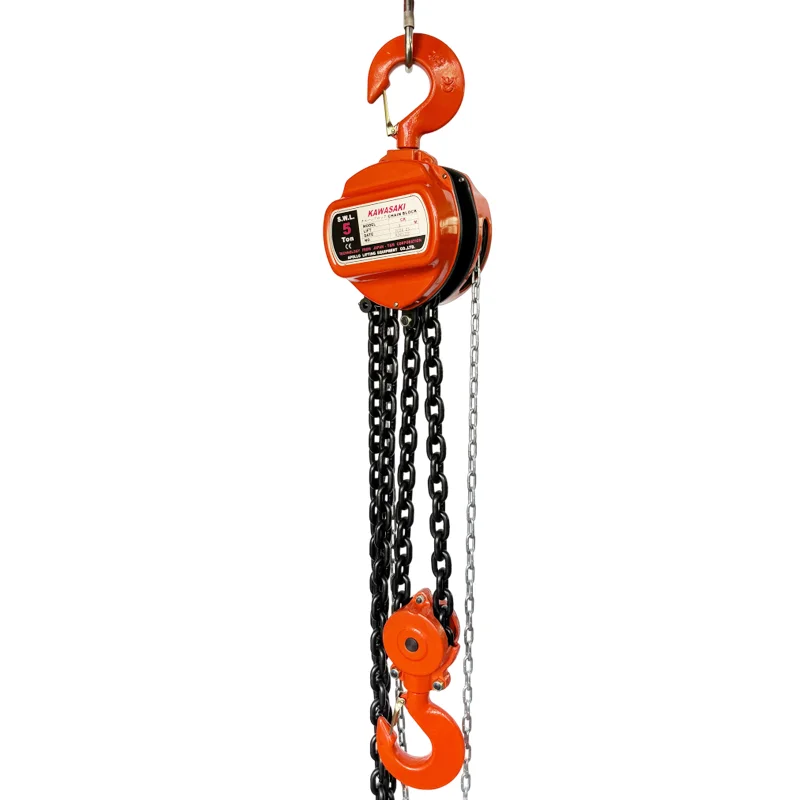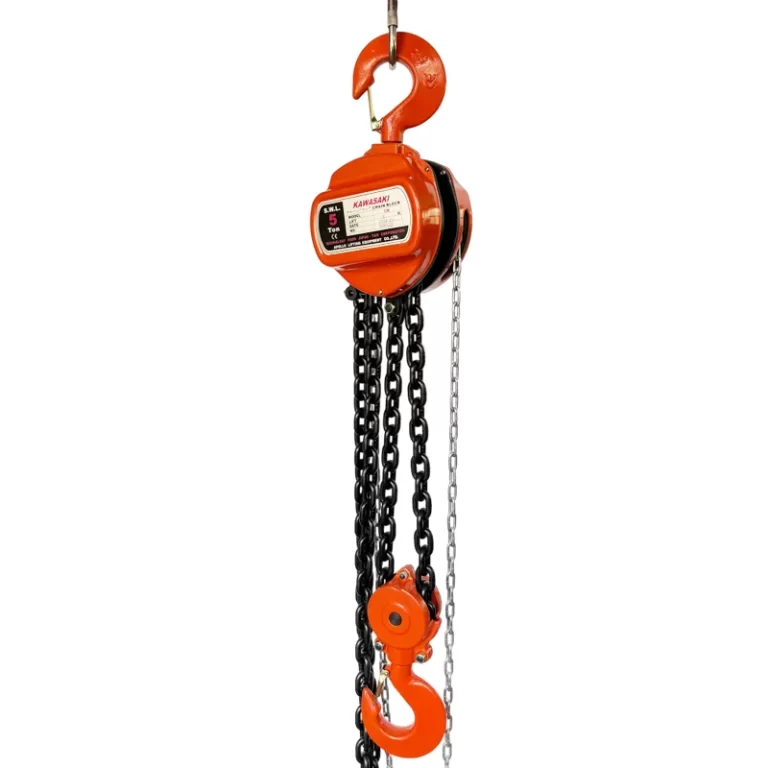Introduction
Manual chain hoists represent significant investments in industrial and construction settings, designed to provide reliable service for years when properly maintained. However, when these tools face extended periods of inactivity due to seasonal work, project completion, or facility changes, they require specialized preparation to prevent deterioration. This comprehensive guide details the essential maintenance procedures necessary to preserve manual chain hoists during long-term storage, ensuring they remain in optimal working condition when needed again.
Improper storage can lead to rust formation, lubrication breakdown, mechanical seizure, and safety component degradation—all of which compromise performance and create potential hazards upon reactivation. By implementing a systematic storage preparation protocol, facilities can protect their equipment investments, reduce future repair costs, and maintain workplace safety standards.
Understanding the Risks of Improper Storage
Environmental Threats
Manual chain hoists face multiple environmental threats during storage. Humidity represents the most significant danger, as moisture accelerates corrosion on critical components like chains, hooks, and gears. Temperature fluctuations can cause condensation inside housing units, while dust and debris accumulation can clog mechanisms and abrade surfaces. UV exposure from sunlight can degrade protective coatings and compromise plastic components.
Mechanical Deterioration
Without proper preparation, mechanical systems within chain hoists can deteriorate during storage. Lubricants may separate, thicken, or evaporate, leaving metal surfaces vulnerable. Gears and bearings may develop “false brinelling”—wear patterns caused by vibration while stationary. Seals and gaskets can dry out and crack, compromising future weather resistance. The brake mechanism, crucial for safety, may seize if not properly maintained before storage.

Comprehensive Pre-Storage Maintenance Protocol
Thorough Cleaning Procedures
Begin the storage preparation process with a meticulous cleaning. Remove all surface contaminants using a stiff brush and industrial-grade degreaser. Pay special attention to chain links, where grit and grime accumulate. For stubborn deposits, use a parts washer with a petroleum-based solvent. After degreasing, wipe all components with a lint-free cloth moistened with a mild detergent solution to remove residual chemicals. Finally, ensure complete drying using compressed air, focusing on intricate mechanisms where moisture might hide.
Inspect during cleaning: As you clean each component, perform a visual inspection for signs of wear, deformation, or damage. Check hooks for twisting or opening, examine chains for stretched links or cracks, and inspect the housing for dents or corrosion. Document any issues discovered for future reference.
Detailed Inspection Checklist
Before storage, conduct a comprehensive inspection to establish a baseline condition. Use this detailed checklist:
Structural Components:
- Examine the housing for cracks, dents, or deformation
- Check mounting points for wear or stress marks
- Inspect handle/lever for bends or damage
- Verify all fasteners are secure and undamaged
Load-Bearing Elements:
- Inspect upper and lower hooks for twisting, opening, or cracks
- Check hook latches for proper function and spring tension
- Examine chain for stretched links, cracks, or corrosion
- Measure chain wear according to manufacturer specifications
Mechanical Systems:
- Test brake function at various load positions
- Check gear engagement through full operational cycle
- Verify free movement of pawl and ratchet mechanisms
- Test limit switches (if equipped) for proper operation
Comprehensive Lubrication Process
Proper lubrication before storage creates a protective barrier against corrosion and maintains component flexibility. Follow these steps:
- Select appropriate lubricants:Use manufacturer-recommended products. Typically, a high-quality, temperature-stable gear oil for internal mechanisms and a chain-specific lubricant for the load chain provide optimal protection.
- Application technique:Apply lubricant to all moving parts while manually operating the hoist through several complete cycles. This ensures even distribution throughout the mechanism. Pay special attention to pivot points, bearing surfaces, and the brake mechanism.
- Chain lubrication:For the load chain, use a dedicated chain lubricant that provides corrosion protection without attracting dust. Apply while slowly running the chain through a clean rag to ensure even coverage and remove excess that might drip during storage.
- External protection:After lubricating internal mechanisms, apply a thin layer of rust-inhibitive oil or silicone spray to external surfaces to protect against environmental conditions.
Operational Testing Before Storage
After cleaning and lubricating, conduct a functional test without load:
Operate the hoist through its full lifting and lowering range multiple times. Listen for unusual noises that might indicate inadequate lubrication or hidden issues. Verify smooth operation without binding or hesitation. Test the brake at multiple positions to ensure it holds securely. For lever hoists, verify comfortable operation and appropriate resistance. Document the test results along with the inspection findings.

Optimal Storage Environment and Positioning
Selecting the Storage Location
Choose a storage location that provides protection from environmental elements. Ideal storage areas maintain stable temperature and humidity levels, with minimal dust and no exposure to corrosive chemicals. The storage area should be secure against unauthorized access and protected from potential physical damage from other equipment or activities.
Environmental controls significantly impact preservation. If possible, select locations with:
- Temperature maintained between 50-80°F (10-27°C)
- Relative humidity below 50%
- Protection from direct sunlight
- Good air circulation to prevent stagnant, moist air pockets
Proper Positioning and Support
How you position the hoist during storage affects its long-term condition:
Fully retract the hoist to minimize exposed chain. Support the hoist properly rather than letting it hang, which can stress components over time. Use dedicated storage racks or shelves that support the hoist body without placing pressure on delicate components. Ensure the storage position doesn’t kink or twist the chain, which can cause permanent deformation.
For extended storage (exceeding 6 months), consider partially supporting the weight of the chain to relieve tension on the internal mechanisms. This can be achieved by coiling the excess chain and supporting it separately rather than letting it all hang from the hoist.
Additional Protective Measures
Protective Coverings and Enclosures
While proper lubrication provides internal protection, external barriers further shield hoists from environmental threats:
Use breathable protective covers that prevent dust accumulation while allowing moisture to escape. Avoid plastic wraps that can trap humidity and accelerate corrosion. For maximum protection in challenging environments, consider vapor-corrosion inhibitor (VCI) bags or papers that emit protective compounds. Alternatively, application of a rust-preventive coating on external surfaces provides an additional protective layer.
Documentation and Tagging
Proper documentation ensures the hoist’s condition and storage requirements are communicated:
Attach a durable tag indicating the storage date, pre-storage maintenance performed, and any specific issues noted during inspection. Include recommended reactivation procedures. Maintain a separate log with detailed inspection findings, lubrication records, and test results. This documentation becomes invaluable when reactivating the equipment, providing a clear history of its condition before storage.
Periodic Storage Maintenance
Even during storage, periodic maintenance preserves hoist condition:

Every three months, visually inspect stored hoists for signs of corrosion, lubricant drying, or environmental damage. Every six months, manually operate the mechanism through several cycles to redistribute lubricants and prevent component seizure. Document these periodic checks to maintain a complete maintenance history.
Reactivation Procedures After Storage
When removing a hoist from long-term storage, follow these reactivation steps:
1. Initial Visual Inspection and Documentation Review
Before any operational testing, begin with a meticulous visual examination. Compare the hoist’s current state directly with the pre-storage inspection report and photographs, if available.
Exterior and Structure: Look for signs of corrosion, new dents, or damage to the housing that may have occurred during storage.
Hooks: Inspect the upper and lower hooks meticulously. Check for any new twisting, opening of the hook throat, or hairline cracks. Ensure the safety latches are present, not deformed, and function correctly (they should spring back to the closed position).
Load Chain: Examine the entire length of the chain for rust, pitting, piling (a build-up of material), or any stuck links. Pay close attention to any stretching, distortion, or wear on the link surfaces. Verify that the chain is properly seated on the sprockets.
Labeling: Ensure all warning tags and capacity labels are legible and securely attached.
2. Detailed Functional Testing
Once the visual inspection is satisfactory, proceed to test the hoist’s mechanics without applying any load.
Operational Smoothness: Slowly operate the hoist through its full range of lifting and lowering motion. The action should be smooth and consistent. Listen carefully for any unusual noises such as grinding, clicking, or binding, which could indicate dried lubricant, internal corrosion, or misalignment.
Pawl and Ratchet: For lever hoists, listen for the distinct, regular clicking sound of the pawl engaging with the ratchet gear. A silent or irregular click suggests a worn or damaged pawl spring or mechanism.
Brake Function Test: This is a critical safety check. Lift the hook a short distance (a few inches). Stop pulling and observe if the hook creeps or drops, indicating a faulty brake. For lever hoists, the brake should hold securely the instant you stop moving the lever. For hand chain hoists, the brake should engage automatically.
3. Lubrication Assessment and Replenishment
The lubricant applied before storage may have degraded, dried out, or become contaminated.
Inspect Existing Lubricant: Check for lubricant that is gummy, tacky, filled with dust, or has visibly dried out.
Re-lubricate if Necessary: If the lubricant shows any signs of deterioration, it must be replaced. Apply manufacturer-recommended lubricants to all moving points. Operate the hoist through several cycles after lubrication to ensure the new lubricant penetrates deep into the gears, bearings, and chain links. Wipe away any excess to prevent attracting dust.
4. Progressive Load Testing
Never immediately place a hoist under its full working load limit after storage. A progressive test validates its integrity under controlled conditions.
Light Load Test (25-50% WLL): First, lift a light, known load. This could be a small fixture or a weight far below the hoist’s capacity. Observe the hoist’s operation, listen for new noises, and verify the brake holds effectively.
Standard Load Test (Up to 100% WLL): Gradually increase the load to the hoist’s Working Load Limit. During this test, monitor for any unusual strain, chain slippage, or difficulty in operation. The brake must hold the full load without any creeping or slippage. Final Verification: After successful load testing, lower the load and perform a final visual check for any loose fasteners or signs of stress that may have appeared during the test. By methodically following these reactivation steps, you transition your manual chain hoist from a stored asset back to a reliable and safe piece of equipment, ensuring it is fully prepared for its next critical task.
Conclusion
Proper preparation of manual chain hoists for extended storage is far more than a simple procedural task; it represents a critical and cost-effective investment directly tied to long-term equipment longevity and unwavering workplace safety. Neglecting this vital process can lead to a host of issues, including internal corrosion, lubricant degradation, brake seizure, and chain rust, all of which compromise the hoist’s structural integrity and safe operating condition.
By implementing a systematic and disciplined approach—encompassing thorough cleaning to remove abrasive contaminants, a detailed inspection to identify and document even minor wear, comprehensive lubrication to protect all moving parts from oxidation, and securing appropriate storage conditions to control environmental factors—facilities can ensure their hoists remain in optimal, ready-to-deploy condition throughout periods of inactivity. This proactive preservation strategy is the cornerstone of asset management, serving to minimize future repair costs and downtime by preventing deterioration before it starts. It effectively prevents unexpected and potentially hazardous equipment failures upon reactivation, thereby safeguarding personnel and operations.
Ultimately, this meticulous preservation process ensures the full service life of these valuable tools is realized, protecting the capital investment. The relatively modest time and resource investment required for proper storage preparation yields exponential returns in the form of guaranteed equipment reliability, enhanced operational safety, and immediate availability when the hoists are eventually called back into service.


